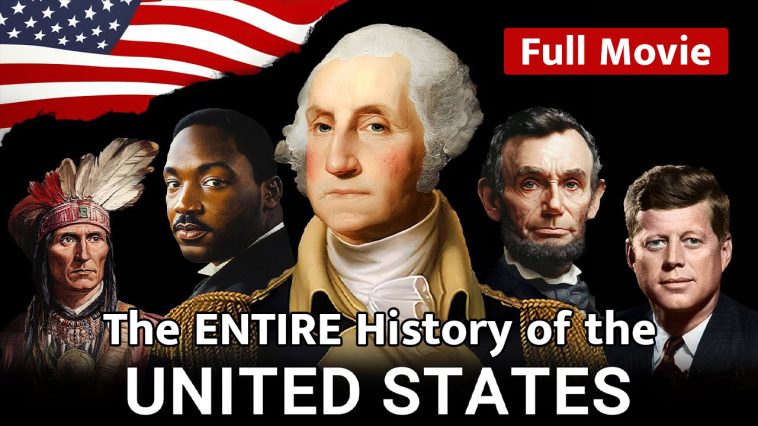Here are the key points and YouTube video “History of the United States”:
- Pre-Colonial Era & European Arrival:
- Before European colonization, Native American peoples had established complex societies and governments across North America for thousands of years.
- Leif Erikson was the first European to reach North America (around the 15th century), establishing a short-lived settlement in Labrador.
- Christopher Columbus discovered the West Indies in 1492, opening new frontiers for European exploration.
- Amerigo Vespucci popularized the term “New World,” leading to the hemisphere being named “America” after him.
- By the 16th century, various European powers (Spain, England, Portugal, Sweden, Dutch, France) began exploring and mapping the East Coast of North America.
- Early interactions between Europeans and Native Americans varied, and European diseases caused widespread illness and death among native populations.
- Early European Settlements & Colonization:
- Early English attempts at permanent colonies, like Roanoke Island (1585, 1587), failed.
- The first permanent European settlement in North America was established by Spanish colonists in St. Augustine, Florida, in 1564.
- The English successfully established Jamestown, Virginia, in 1607.
- The Pilgrims established the Plymouth colony in 1620, celebrating the first Thanksgiving in 1621.
- Throughout the 17th century, more English colonies formed, increasing trade with Europe.
- Spain expanded its North American empire, and France established settlements along the St. Lawrence River.
- Road to Revolution & Independence:
- Tensions escalated between the British government and American colonists in the 1760s as Britain sought to regain economic control after the Seven Years’ War [37:04:00].
- British Parliament levied taxes and acts (e.g., Sugar Act of 1764) to pay off war debt, leading to protests from colonists who felt their rights were violated due to a lack of representation.
- These disputes ultimately led to the American Revolution and the birth of the United States of America on July 4th, 1776.
- Modern Era & Current Challenges:
- The video briefly covers the US’s rise to global dominance, becoming a “modern Roman Empire” with a powerful military and numerous human accomplishments.
- It discusses recent events, including the 2020 presidential election where Joe Biden defeated Donald Trump.
- Trump contested the outcome, leading to increased distrust in the electoral process and the January 6th, 2021, attack on the US Capitol.
- Under President Biden, the US military withdrew from Afghanistan, and the US began funneling aid to Ukraine after the 2022 Russian invasion.
- The video highlights the ongoing political division within the country.
- Despite challenges, the United States is characterized by its resilience, adaptability, and diversity, maintaining its position as a world leader.




GIPHY App Key not set. Please check settings